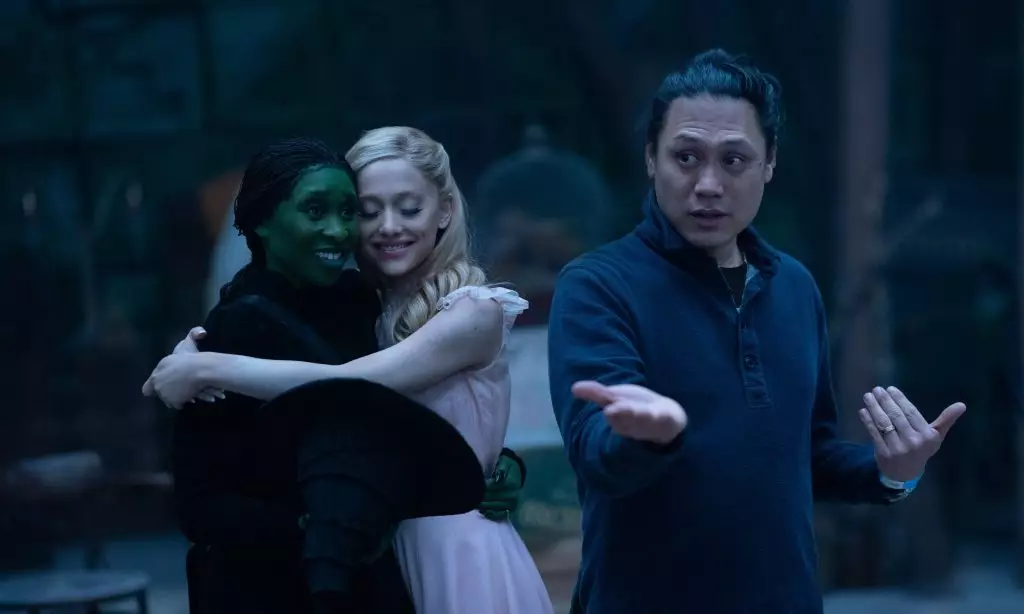In the lead-up to the highly anticipated release of *Wicked*, directed by Jon M. Chu, a substantial debate emerged regarding the film’s visual narrative, especially its color grading. Fans who looked back fondly on the technicolor vibrancy of the original *The Wizard of Oz* from 1939 voiced their concerns over the apparent subdued palette in this new adaptation. With a deep analysis of both the film’s aesthetic choices and its box office success, it’s clear that Chu’s vision for Oz contains profound significance beyond mere colorful visuals.
Jon M. Chu articulated his intention behind the film’s distinct visual approach during an interview with *The Globe and Mail*. He emphasized the desire to immerse viewers in a real-life version of Oz. According to Chu, his goal was to shape the narrative environment so that the relationships among characters could resonate authentically with audiences. He remarked, “If it was a fake place, if it was a dream in someone’s mind, then the real relationships and the stakes… wouldn’t feel real.” This philosophy contrasts sharply with the hyper-saturated colors of the original film, which is often viewed through a nostalgic lens.
Chu’s insights reveal an underlying commitment to authenticity and depth, where the landscape becomes a character itself. By avoiding an overly glossy or plasticky aesthetic, he aimed to portray the “wear and tear” of Oz, creating a tactile experience that evokes a sense of realism. The depiction of this fantastical land is intended to make the audience feel the existence of not just ornate settings, but also the complexities of the environment in which the emotional arcs of characters play out.
The decision to adopt a more muted color palette sparked controversy among fans and critics alike. Some disparaged the film for what they perceived as “drab” coloring and lack of vibrancy, citing backlighting techniques that detracted from the envisioned ambiance of Oz. Yet others defended this artistic choice, arguing that it helped illuminate the film’s thematic essence. These discussions highlight the contrasting expectations audiences have for adaptations of beloved classics.
Interestingly, Chu remarked on the evolution of technicolor technology, noting that it’s rarely used in modern filmmaking due to its prohibitive costs and the decline in demand for such techniques. This adds another layer to the discourse: the adaptation not only relies on new technologies and trends but also reflects visual storytelling traditions that prioritize narrative and emotional weight over conventional beauty.
Despite the mixed reactions to its visual style, *Wicked* has achieved remarkable success at the box office. It shattered records, achieving both the largest global and domestic opening for a Broadway-derived film, showcasing the truth that audience anticipation and star power can supersede aesthetic critiques. The film, featuring a star-studded cast including Ariana Grande, Cynthia Erivo, and Jonathan Bailey, ignited an unprecedented pre-Thanksgiving box office haul of $205 million.
This astounding financial performance speaks to the film’s resonance with a contemporary audience, a reflection of the enduring power of its source material. The narrative, essentially a retelling of *The Wizard of Oz* from the perspectives of Elphaba and Glinda, touches on themes of friendship, morality, and societal expectations, making it relevant in today’s world.
Chu’s *Wicked* ultimately represents a bold artistic direction that sacrifices the visual explosion typical of earlier adaptations for a grounded expression of character and space. The ongoing conversation regarding its color choices reminds audiences that how a story is told visually can evoke different responses based on individual perceptions and expectations. As the film continues to captivate audiences and redefine box office success, it reaffirms one important truth: storytelling in any medium remains dynamic, influenced by cultural shifts and artistic endeavors. Whether through bright colors or earthy tones, the relationships forged among characters in *Wicked* will remain at the heart of this new cinematic experience, inviting audiences to reflect and feel as they travel once more into the enchanted, yet complex, world of Oz.


Leave a Reply